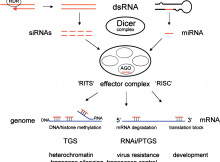Each individual is unique all the way down to his or her genes.
In every living cell, there is a process that translates essential genetic information from DNA polymers into proteins. This process is done by molecular machines that are made from RNA polymers and proteins.
RNA: The Workhorse
While you may think that the proteins play a significant role in doing all of the critical work, this is actually false. Surprisingly, the RNA is what carries most of the workload through its’ protein-making machine called the ribosome. The RNA creates the basic form and structure of the ribosome which is to be used later in the process of storing genetic information. Ribosomal bacteria has stayed with humans throughout the billions of evolutionary years.
RNA Messengers
Messenger RNA provides the ribosomes with genetic information drawn from the DNA and provides the blueprints for making proteins – otherwise known as the amino acids.
Amino acids are proteins that are delivered to the ribosome by the transfer RNA. They are linked together in a genetically fashioned sequence to make up the proteins as a whole in the body. The human body’s cells contain over 100,000 different types of proteins that unique to one another. Through the process of RNA synthesis, the human body is genetically coded and given a unique distinction that separates it from other genes.
Protein Synthesis
RNA’s role in protein synthesis is to fight infections that bind to the ribosomal RNA of bacteria and to block the production of cellular protein. They play a significant role in preventing bacteria from growing and fight errors within the sequence. These errors can cause diseases in humans that could potentially be life-threatening.
